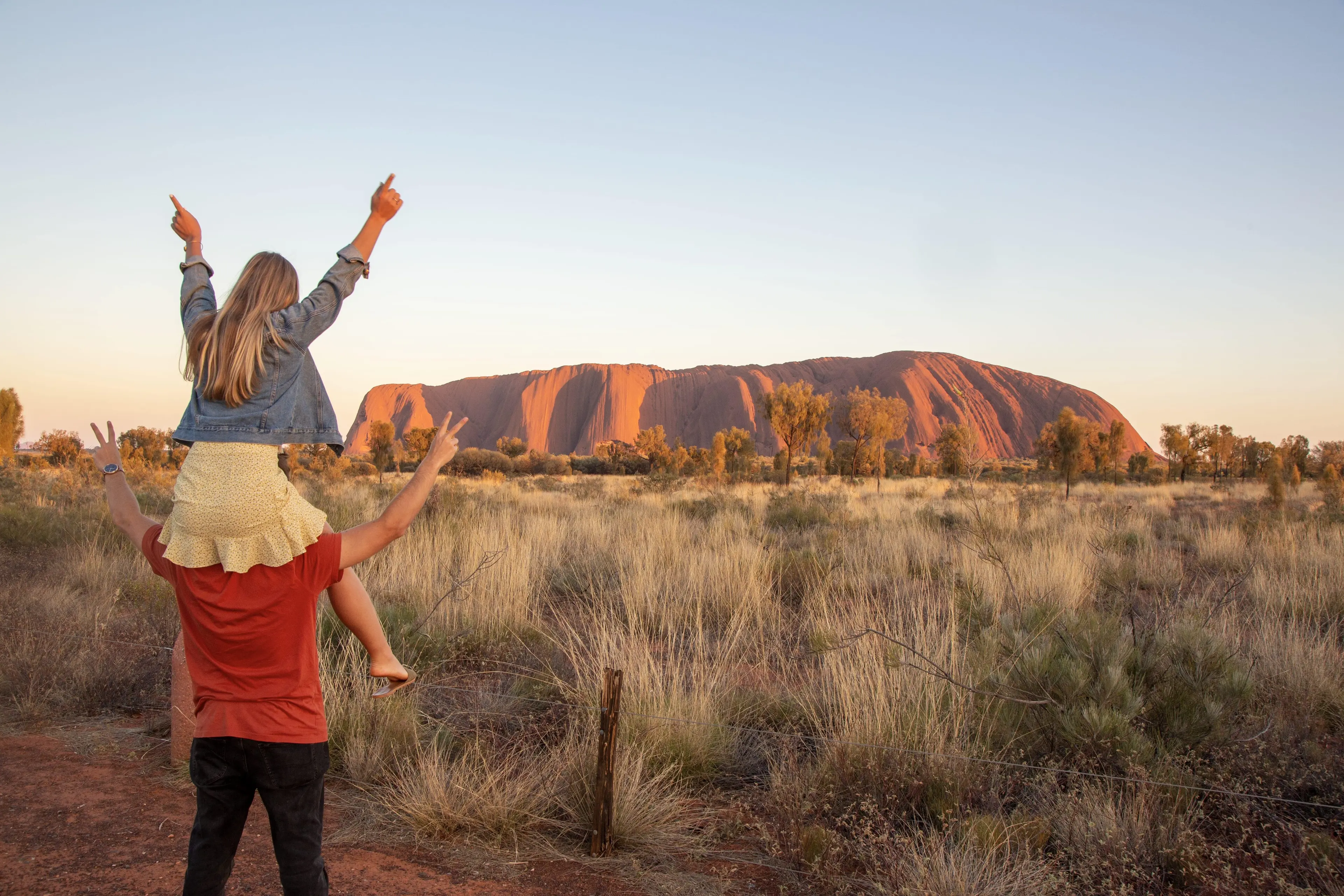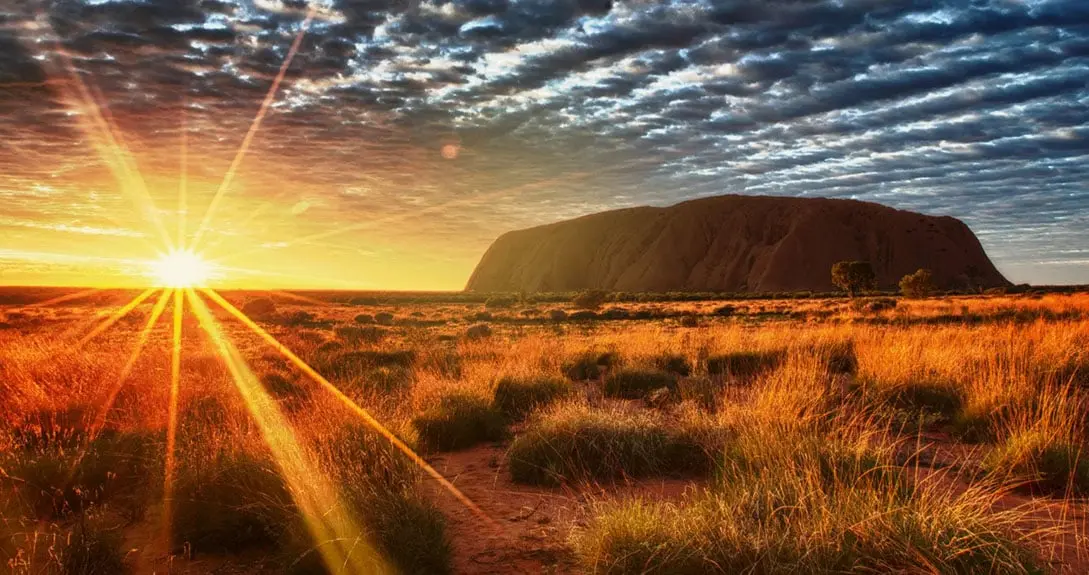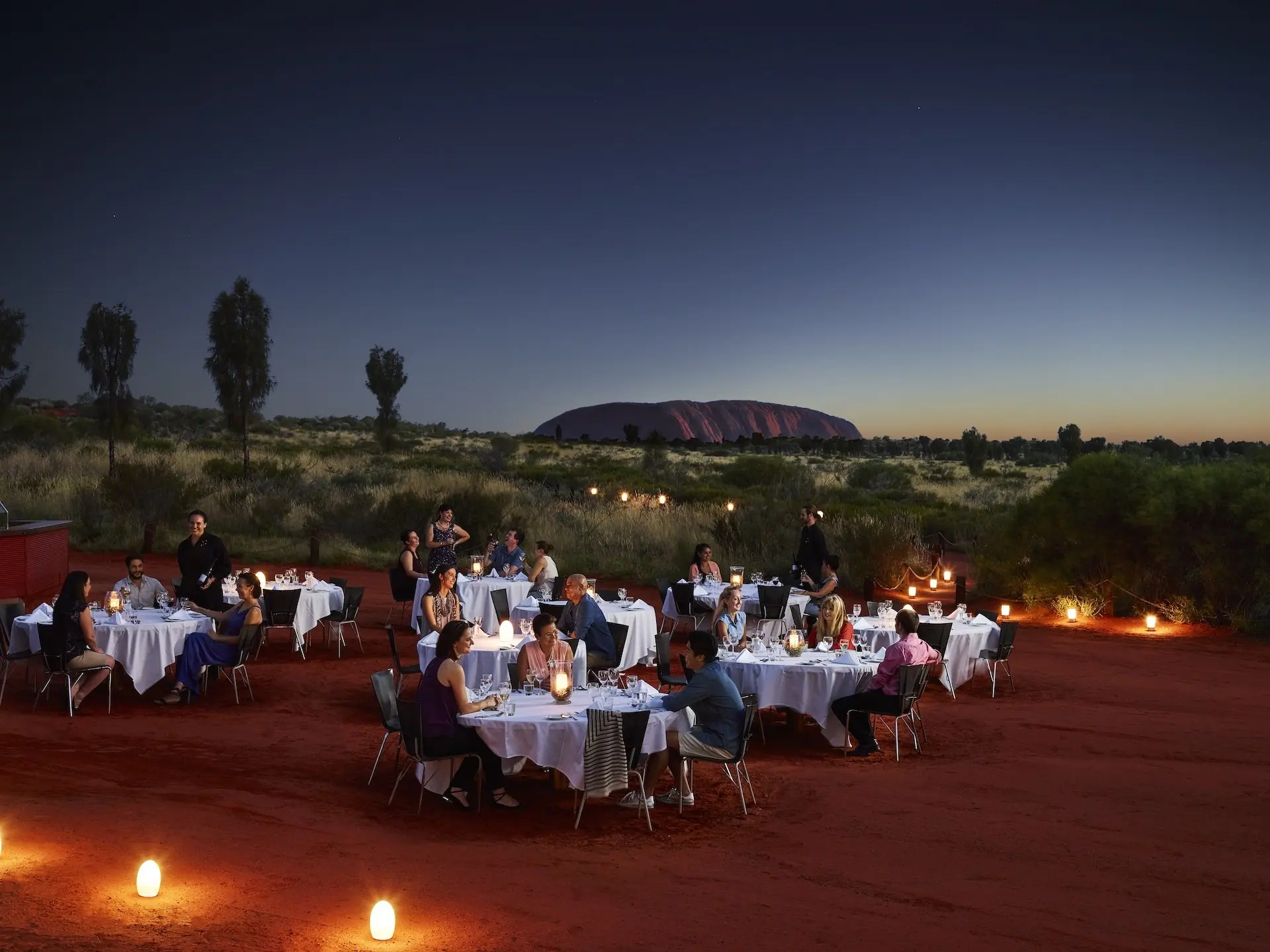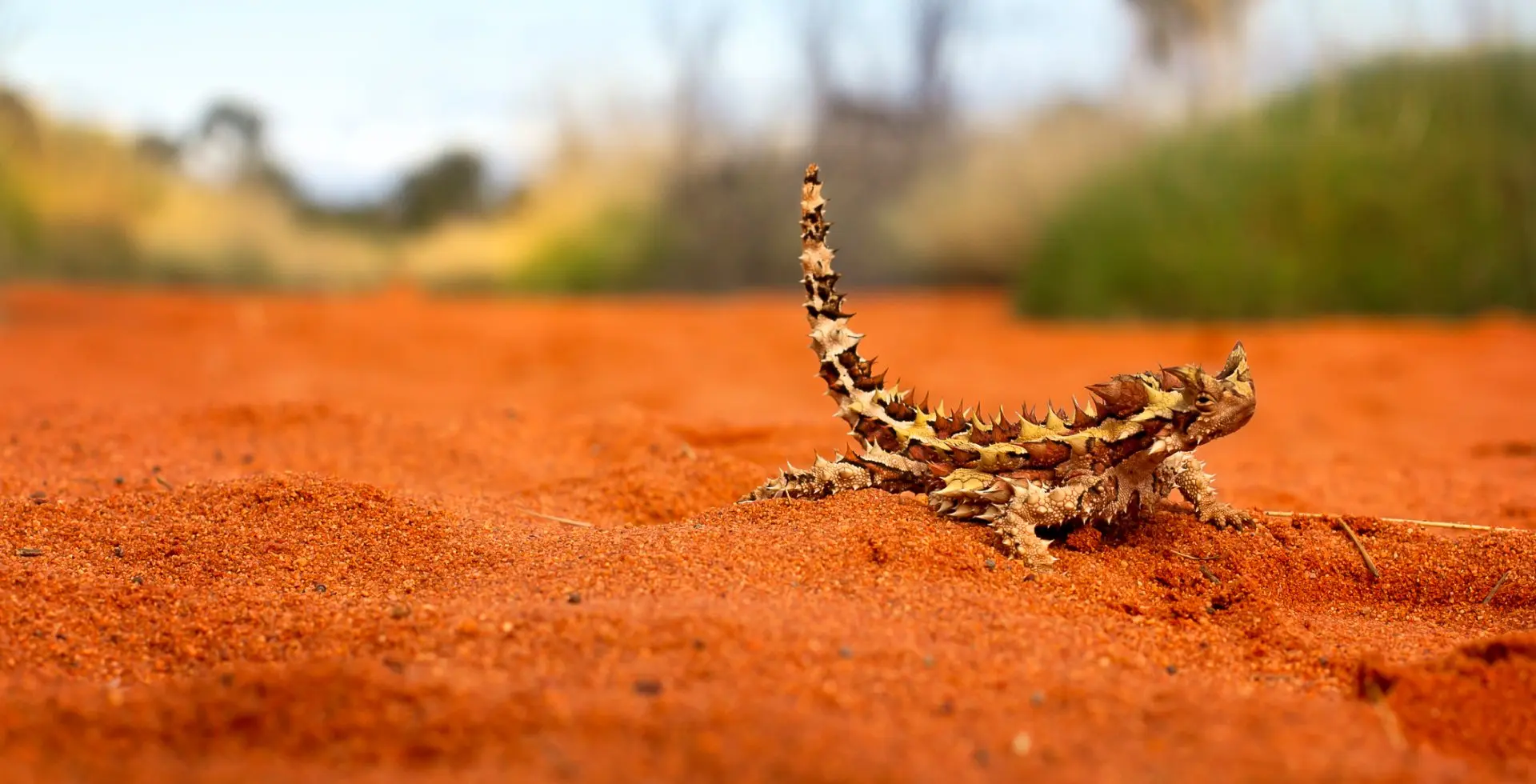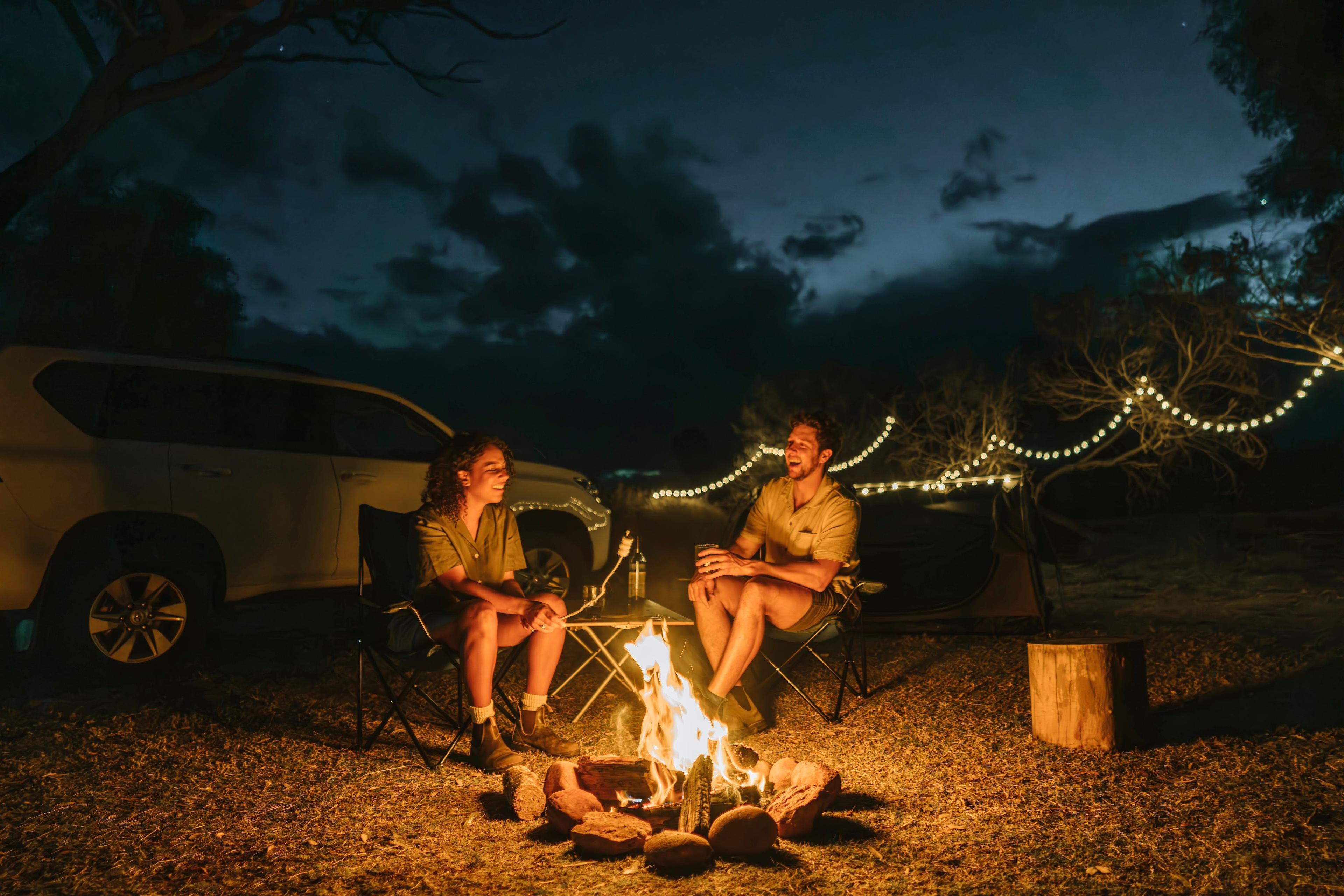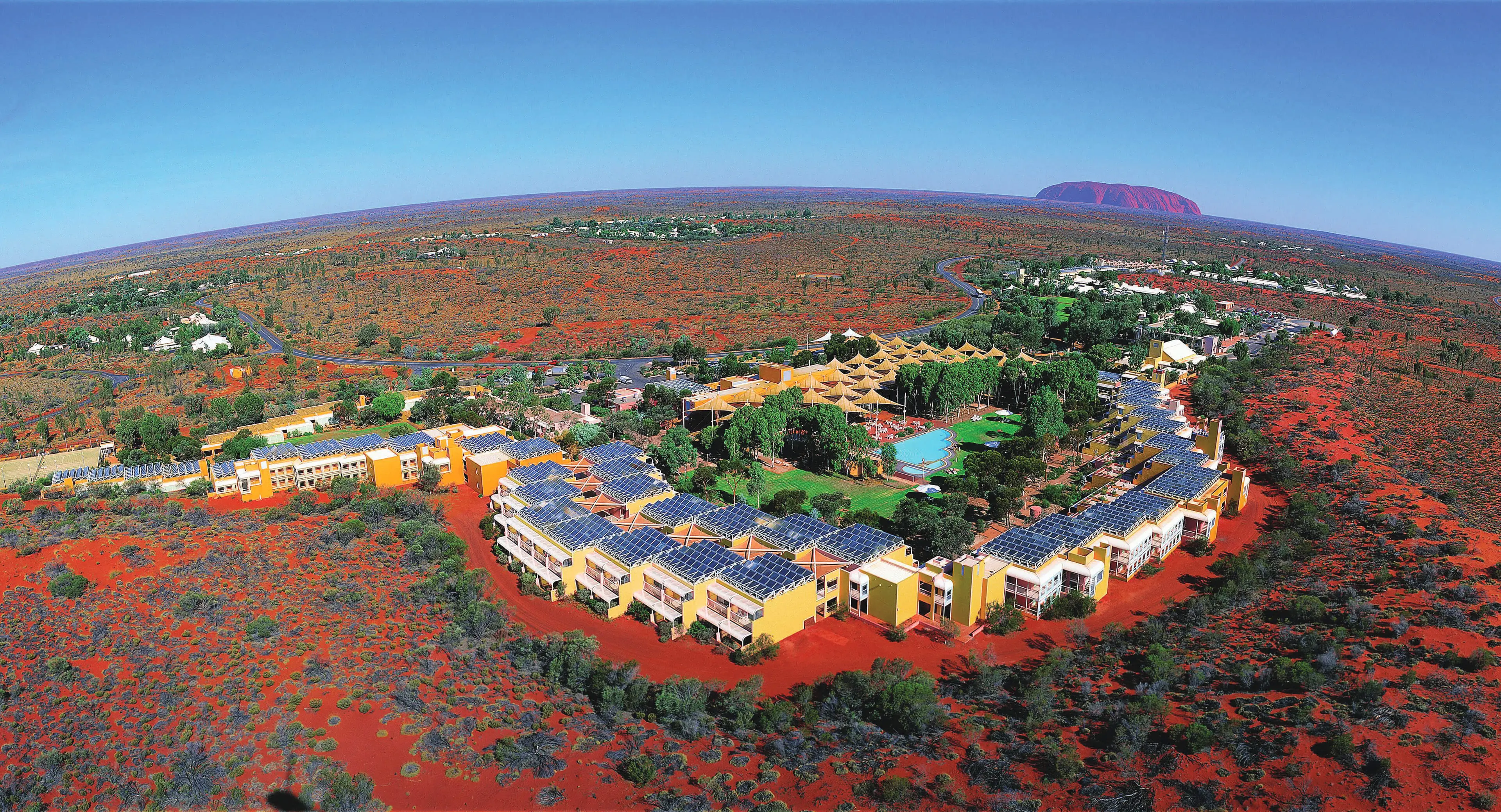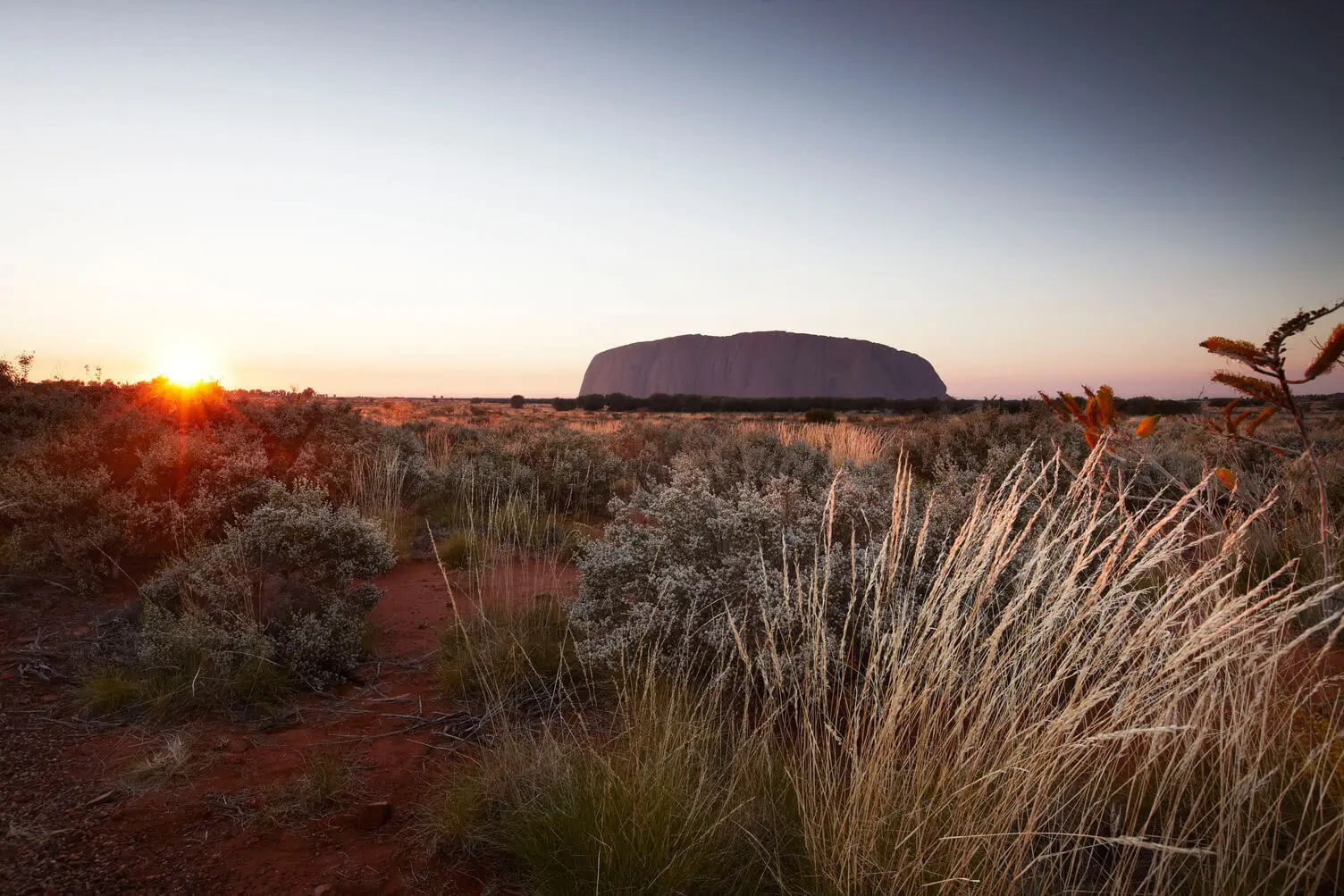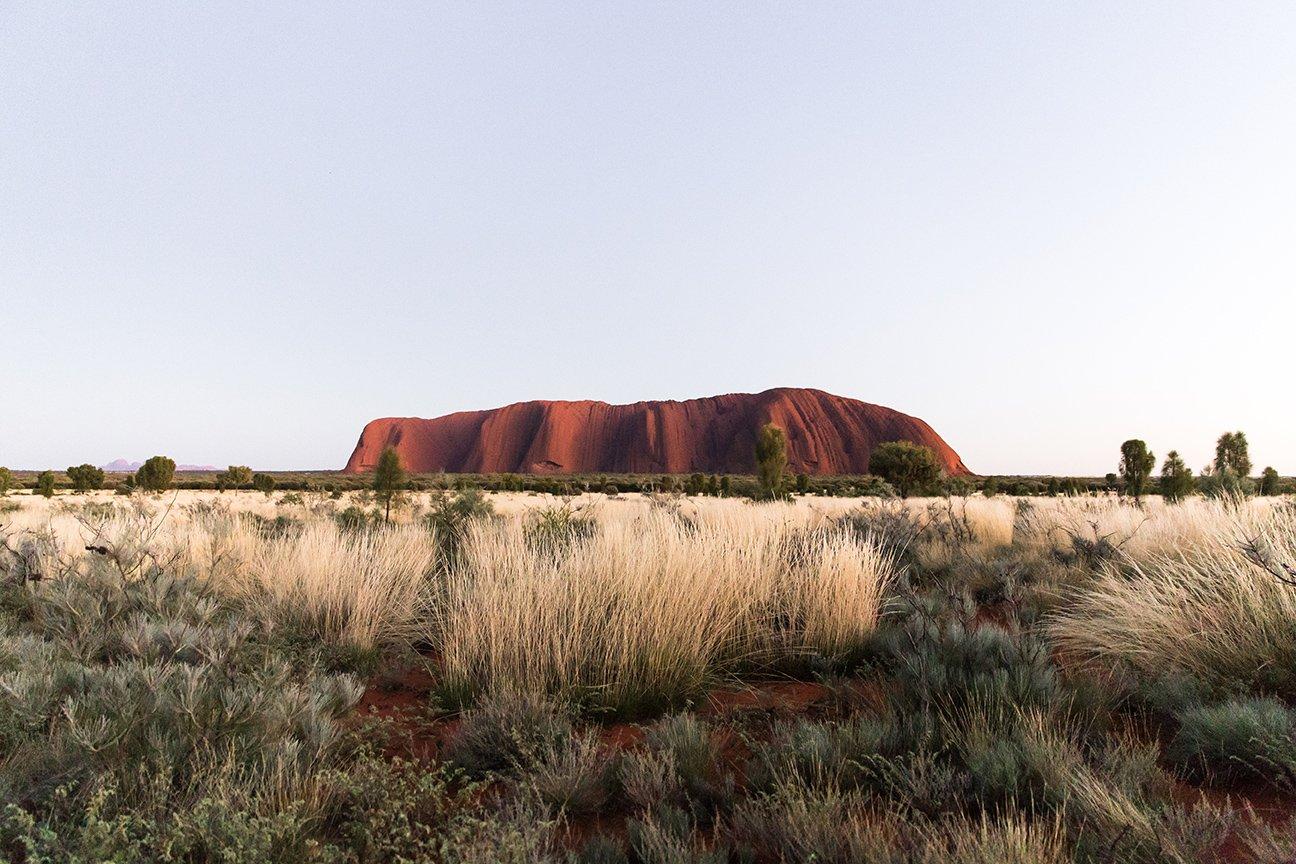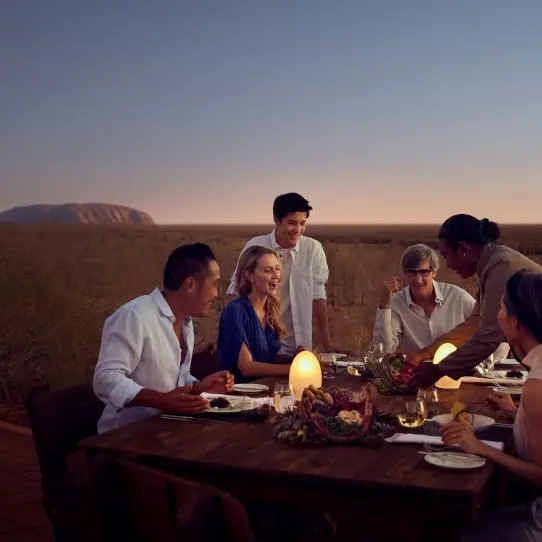Top 6 Natural Wonders of the Red Centre
The Northern Territory’s Red Centre Way is by far one of Australia’s greatest drives. It’s an epic journey from Alice Springs to Uluru via the West MacDonnell Ranges - or the other way around - and is rich in ancient culture, heritage and historical sites, brimming with unique flora and fauna, hidden waterholes and breathtaking vistas.

There’s nothing else on Earth quite like a drive along the Northern Territory’s Red Centre Way. Here, across rugged landscapes filled with unique flora and fauna, you’ll be inspired by natural wonders, invigorated by ancient cultures, and fascinated by historical sites. We’d say it’s a pretty epic road trip, but epic is an understatement! And while there’s a lot to see as you make your way between Alice Springs and Uluru, there are a few things we think are simply can’t miss.
Here are six natural wonders you have to see when you’re driving the Red Centre Way:
1. Standley Chasm
One of eight permanent water sources in the West MacDonnell Ranges, you’ll find Standley Chasm about 50kms west of Alice Springs. Known to the local Arrernte people as ‘Angkerle Atwatye’, this natural rocky alleyway was formed thousands of years ago by rushing floodwaters carving out the mountains — resulting in striking sheer rock walls that tower up to 80m high. And while it’s only natural to look up here, you’ll also want to look down at the amazing variation of rock types along the chasm floor — all carried here by water.
If possible, try to arrive at Standley Chasm around midday and you’ll be in for a real treat. On a sunny day, sunlight will enter the gorge around this time and brilliantly illuminate its red walls. For a few unforgettable minutes, the chasm will almost appear to be glowing. It’s a truly stunning sight to see.
Fast Fact: Standley Chasm was traditionally a sacred women’s site for collecting bush medicine and performing sacred ceremonies.
2. Glen Helen Gorge
If you’re looking for spectacular views of the West MacDonnell Ranges, Glen Helen Gorge is an essential stop on your road trip. Here, you can take in a view of Mount Sonder, one of Central Australia’s highest points. Depending on the time you arrive, the colour of Mount Sonder will appear to change in the passing light. Of course, there’s plenty to see at Glen Helen Gorge and not just from it. There’s a beautiful waterhole here where the West MacDonnell Ranges part slightly to make way for the Finke River. On those warm Australian summer days, it’s a perfect spot for a dip. It’s also a popular camping spot for travellers making their way along the Red Centre Way.
Fast Fact: Traditional owners of the land believe that Glen Helen Gorge is the home of an ancient Rainbow Serpent and regard it as a sacred spot.
3. Kings Canyon
If you’re a hiker, you’ll want to make tracks to Kings Canyon. Situated in Watarrka National Park between Alice Springs and Uluru, Kings Canyon’s towering sandstone walls climb over 70m into the sky. Leisurely walkers can explore the boulder-strewn canyon floor on the 2.6km Kings Creek Walk. You may even catch a glimpse of some of the more than 600 species of native plants and animals that call the canyon home.
Hikers looking for more of a challenge will want to make the rocky climb to the rim of the canyon on the 6km Rim Walk. This walk begins with a challenging 500-step climb that is rewarded by absolutely breathtaking views of Watarrka National Park. Once you’ve snapped a photo (or ten!), you’ll descend into the green oasis that has undoubtedly earned its name, ‘Garden of Eden’. Sound like the perfect spot for you? You can also experience all the majesty of Kings Canyon on a day trip from Uluru.
Fast Fact: Kings Canyon is home to Priscilla’s Crack, a formation movie buffs will recognize from the classic Australian movie, Priscilla Queen of the Desert.
4. Mount Conner
A quick glance at Mount Conner (also known as Atilla and Artilla), and you might convince yourself you’ve arrived at Uluru. After all, this flat-topped sandstone capped mountain shares a few similar visual traits with its more-famous counterpart. But look again and you’ll find it has charms all its own — including a unique horseshoe shape. This inselberg is located on the 416,000 hectare Curtin Springs Station, private property not generally open to the public. So if you want to get closer, you’ll need to book a tour with SEIT’s 4WD Outback Adventure. These local experts will share the pastoral history of the region with you and whisk you away to an ancient inland salt lake, as well as habitats for red kangaroos, rock wallabies, and a vast array of birds and reptiles of the Red Centre.
Fast Fact: Because of its similar appearance to Uluru, Mt Conner is sometimes lovingly referred to as 'Fooluru'.
5. Kata Tjuta
Located within Uluru-Kata Tjuta National Park, Kata Tjuta is made up of 36 weathered rock dome formations. So it’s no wonder that its name is aboriginal for ‘many heads’. These fascinating formations extend 6kms into the ground and are the result of a pattern of erosion that began more than 500 million years ago.
You’ll have a chance to see an amazingly abundant assortment of unique flora and fauna here, especially if you choose to hike the popular yet challenging 7.4km Valley of the Winds circuit. This trek will take you through and into Kata Tjuta’s red rocky dome, which appears to glow around sunrise. Along the way, keep your eyes peeled for the Australian ringneck parrot, thorny devils, three-lined knob-tailed geckos, red kangaroos, and more! If you’d rather a shorter walk, you can head out on the 2.6km Walpa Gorge trail. Or, if you’d prefer someone else lead the way, join an AAT Kings guided tour or SEIT guided tour to enjoy some expert insight on this natural spectacle.
Fast Fact: Kata Tjuta is a sacred Anangu men’s site under Tjukurpa (law), and many stories of Kata Tjuta are not known except to initiated men.
6. Uluru
We couldn’t share our picks for the Red Centre’s top natural wonders without mentioning the world-famous Uluru, could we? Uluru rises 348 metres above the desert floor. A living cultural landscape brimming with ancient Indigenous culture and spirituality, few places on Earth compare to Uluru. In fact, it is often referred to as Australia’s beating heart.
One of our favourite things about Uluru is just how many different ways there are to experience this ancient wonder. Hikers can walk around the 10.6km base on foot, or put the pedal to the metal on a bicycle. You can also get a brilliant bird’s-eye view of Uluru, Kata Tjuta, and the surrounding landscape by taking to the skies for a helicopter ride or scenic flight.
Whether you choose to explore on your own or as part of an expert-led guided tour, you’ll have an unbelievable opportunity to learn more about the Anangu and their culture, as well as the ancient rock art, flora, and fauna.
Fast Fact: Sunrise and sunset are especially spectacular at Uluru. Two of the best ways to experience them are from one of the viewing platforms or as part of a guided tour.
See The Best of the Red Centre From Ayers Rock Resort
When it comes to exploring the Northern Territory’s natural wonders, Ayers Rock Resort is the perfect base. You’ll have easy access to Uluru-Kata Tjuta National Park, as well as a wide range of accommodations, shops, restaurants, and experiences. There are even plenty of free guest activities to learn more about Aboriginal culture and taste some authentic bush tucker.
Ready to start planning your Red Centre adventure? Book today.
